Mission: To serve the people of Utah as trustee and guardian of the state's wildlife.
The division manages all fish and wildlife species, regulates hunting, fishing and trapping, and conducts non-consumptive activities. The Division employs staff in five regional offices in Ogden, Springville, Vernal, Price, Cedar City, and Salt Lake City.
During the 2015 General Session, the Legislature appropriated for Fiscal Year 2016, $75,773,700 from all sources for Wildlife Resources. This is a 14.9 percent increase from Fiscal Year 2015 revised estimated amounts from all sources. The total includes $7,633,100 from the General/Education Funds, an increase of 27.3 percent from revised Fiscal Year 2015 estimates.
In addition to statewide compensation and internal service fund cost increases, the following appropriation adjustments were made during the 2015 General Session:
The following are the top measures chosen by the division management to gauge the success of its programs.
Cougar/Bear Claims
This performance measure tracks the claims for cougar and bear livestock damage over time. The figure below presents the total claims, the amount appropriated, and the actual amount paid. In FY 2008 and FY 2009 the appropriated amount (red line) was more than the claims received (green line) and division paid (blue line) for all the requested damages. In the last four years, however, the appropriated amount of $140,000 was not sufficient to cover the total claims submitted. In these cases, DWR had to prorate the claim payments to 84% in FY 2010, 74% in FY 2011, 66% in FY 2012, 86% in FY 2013, and 95% in FY 2014.
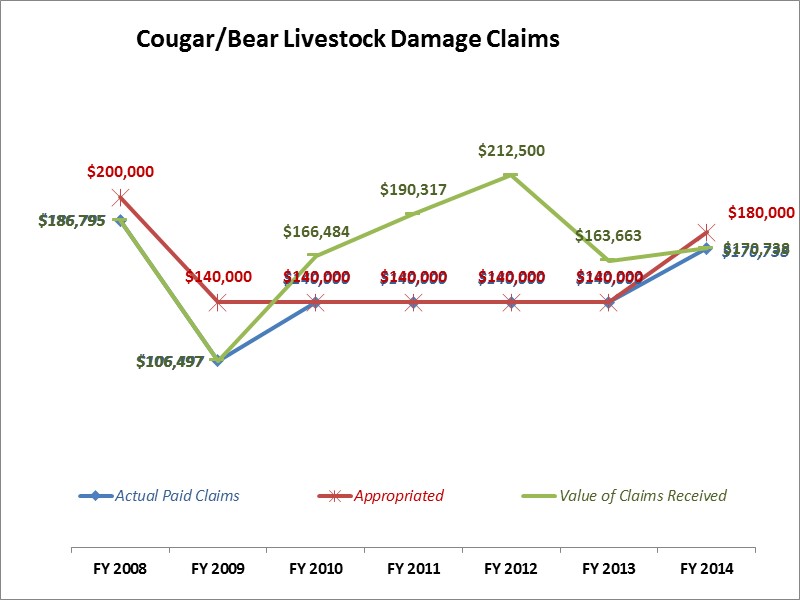
Average Costs for Cougar/Bear Claims
There is an increase in the number of claims per year for cougar/bear damages in the last four years.
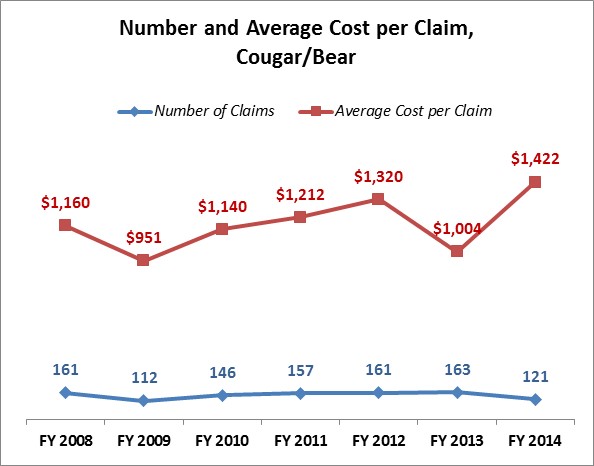
Depredation Payments
This performance measure tracks the total amount for submitted claims and the actual payments for depredation or crop loss over time.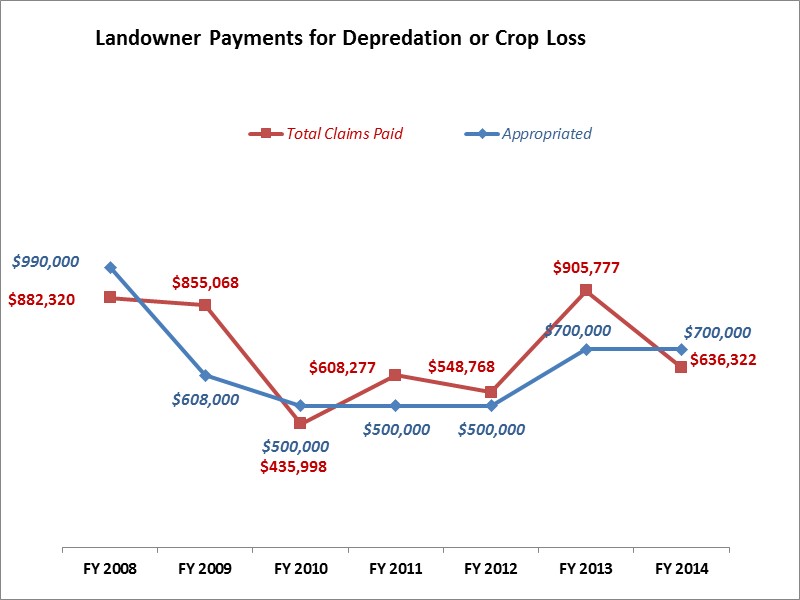
Depredation Average Costs
This measures shows the number of claims and average cost per claim over time.
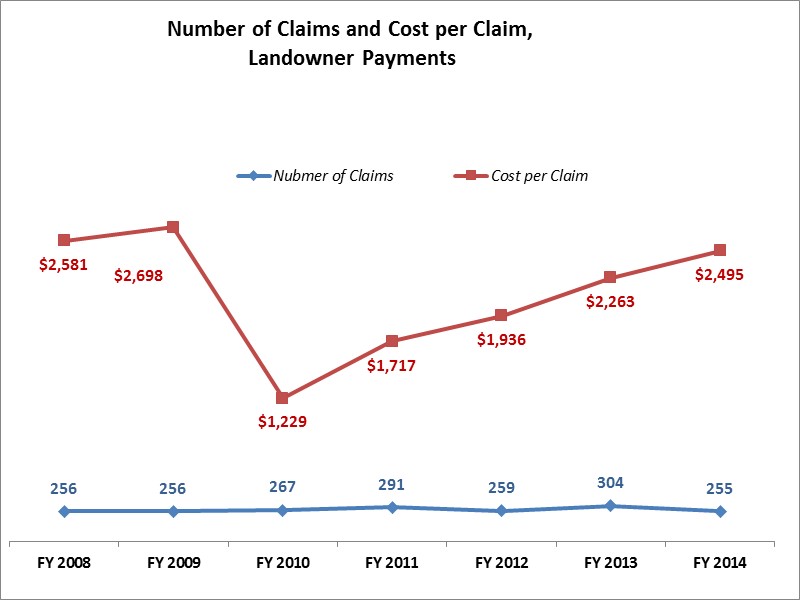
Belief statement: The Division of Wildlife Resources (DWR) maintains sustainable and diverse wildlife populations that are valuable to all citizens of Utah.
Resource goal: Expand wildlife populations and conserve sensitive species by protecting and improving wildlife habitat.
- Protect existing wildlife habitats and watersheds and improve an additional 500,000 acres of critical habitat by 2019.
- Increase fish and game populations to meet management plan objectives, and expand quality fishing and hunting opportunities.
- Conserve sensitive species to prevent them from becoming listed as threatened or endangered.
Agency goal: Improve the overall efficiency and effectiveness of the Division of Wildlife Resources.
- Increase programs that promote teamwork, provide leadership training opportunities, and motivate employees to be more productive, efficient and successful.
- Increase programs to effectively recruit and retain new employees.
- Improve the image of the Division by maintaining high standards of conduct and professionalism among division employees.
- Increase efforts to simplify rules, regulations and guidebooks.
Constituency goal: Achieve broad-based support for division programs and budgets by demonstrating the value of wildlife to all citizens of Utah.
- Increase public awareness of wildlife as a quality-of-life issue in order to expand our support base and achieve stable funding.
- Improve communications with wildlife organizations, public officials, private landowners and government agencies to obtain support for division programs.
- Expand programs to recruit and retain young hunters, anglers and wildlife watchers.
License revenue is deposited into the Wildlife Restricted account. Federal funds primarily come from excise taxes on sporting goods.
Special Funds
The figures below show the division's major restricted funds over time: each fund's activities, the appropriated amount for the current fiscal year, as well as the average revenues, expenditures, and balances.
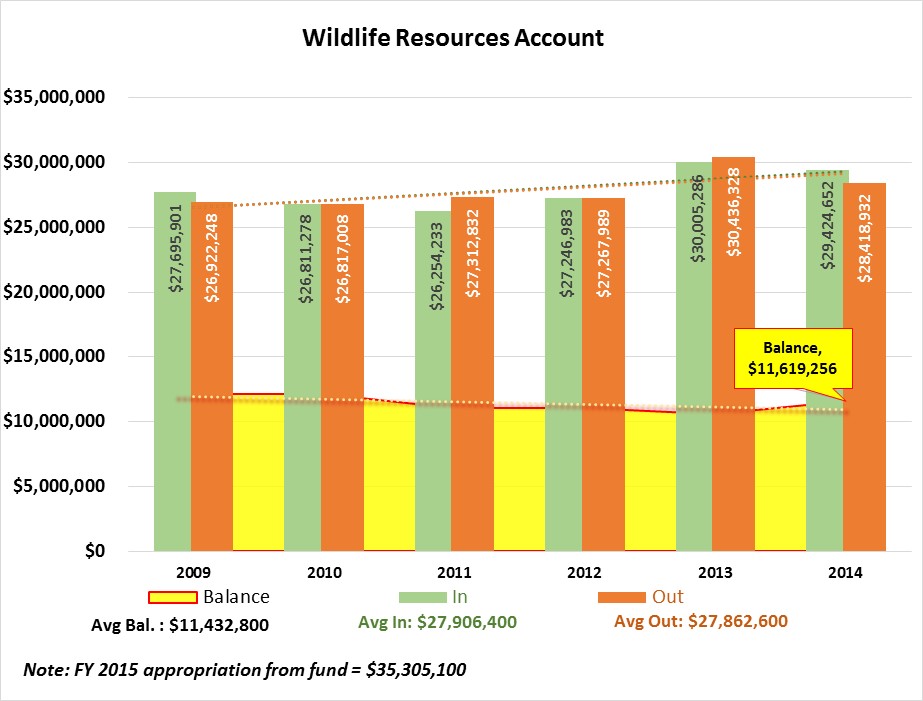
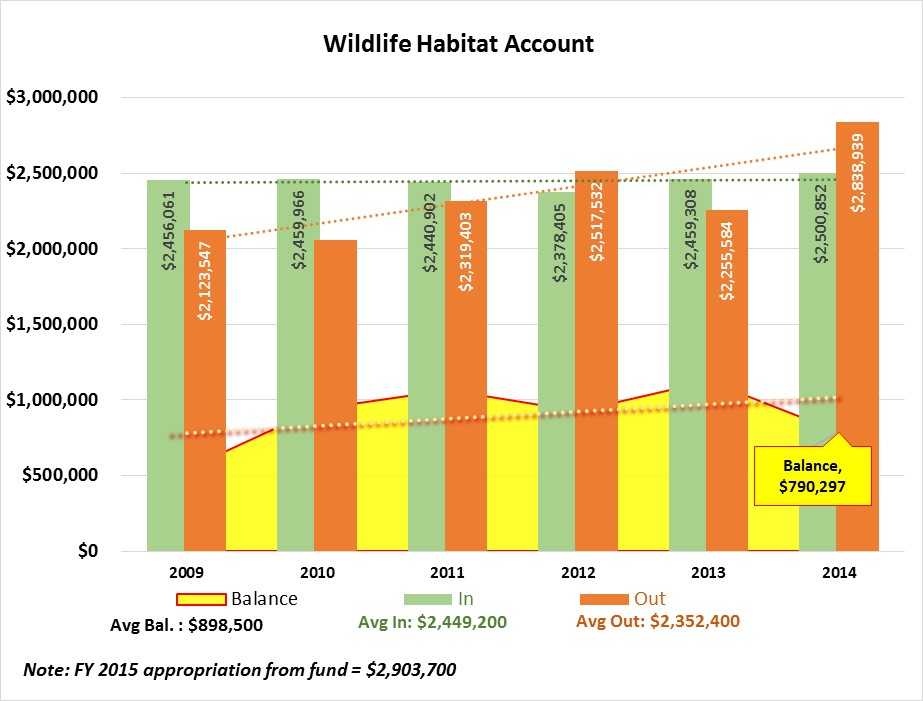
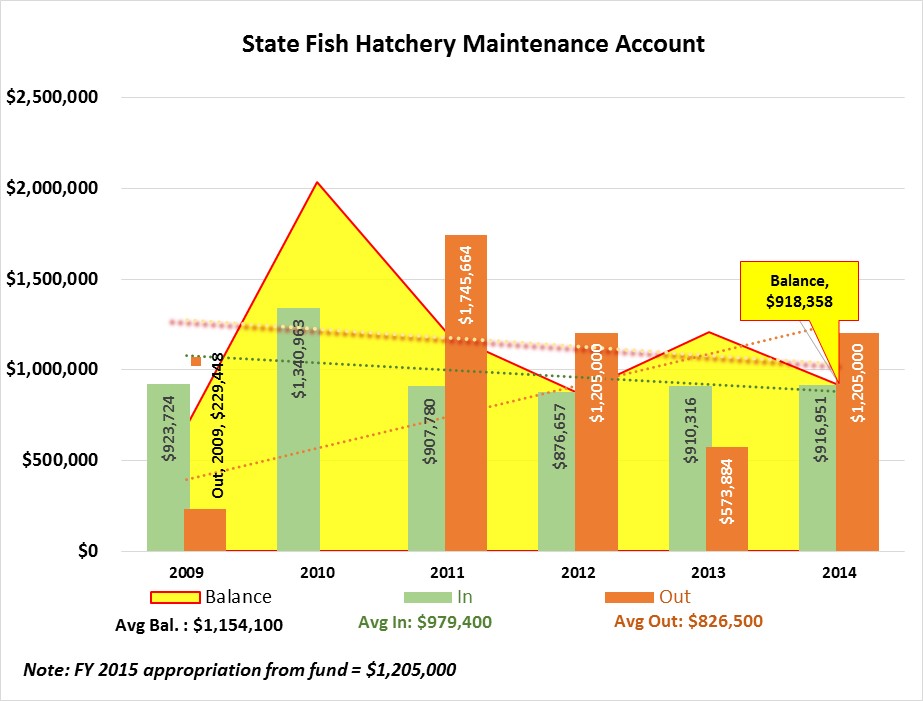
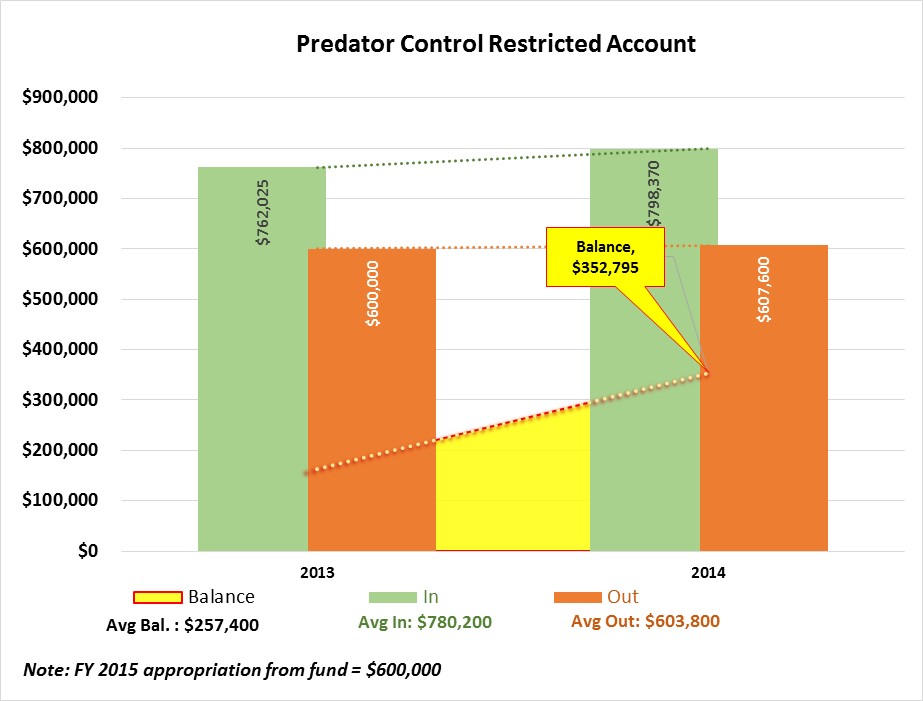
COBI contains unaudited data as presented to the Legislature by state agencies at the time of publication. For audited financial data see the State of Utah's Comprehensive Annual Financial Reports.